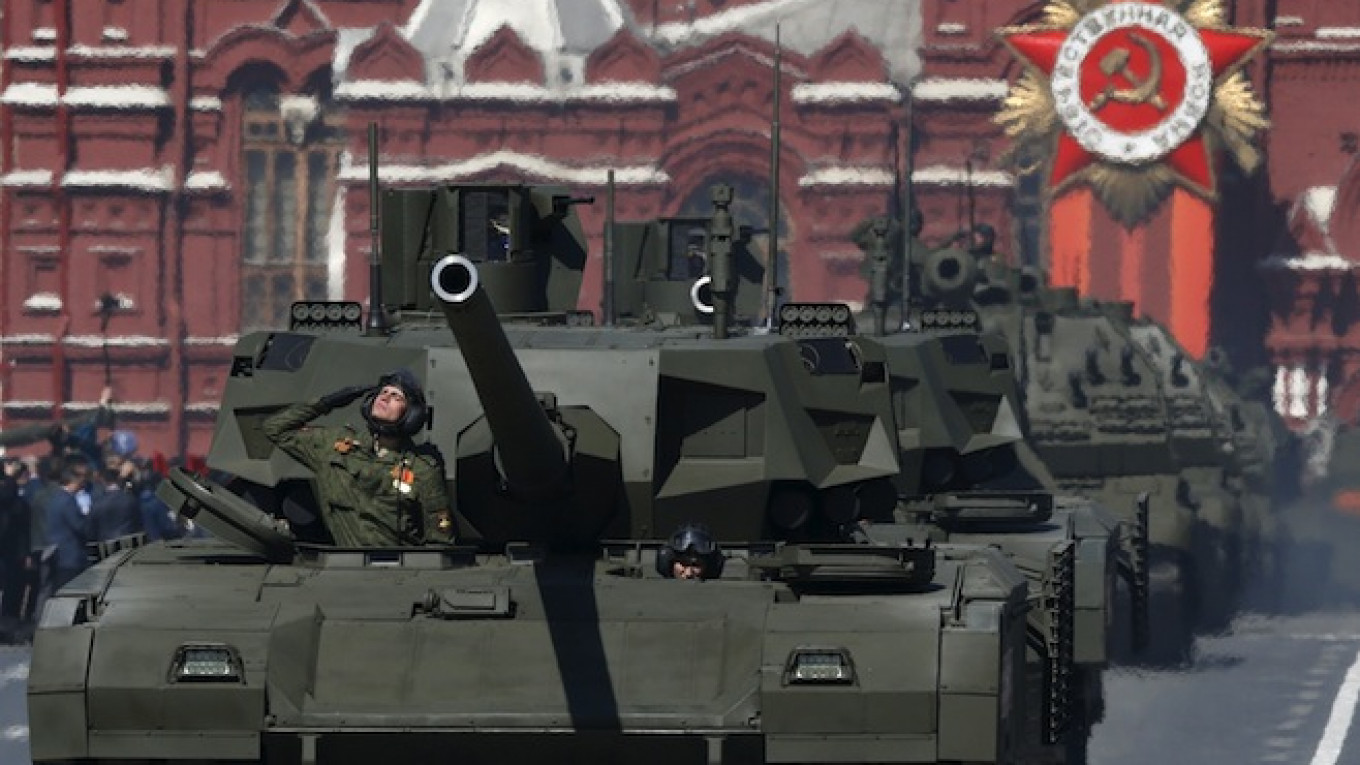Russia's new Armata T-14 tank will cost a mere 250 million rubles ($3.75 million) when it enters serial production, the head of the vehicle's manufacturer said Tuesday, putting the battle tank in strong position to compete with U.S. and European rivals on the global export market.
The Armata T-14 is Russia's first new main battle tank since the fall of the Soviet Union. Its design is a departure from Soviet models, focusing on heavier armor and crew survivability. Soviet tanks were designed largely as mass-produced throwaways.
The official cost of a single Armata has not been released, but Oleg Sienko, head of tank maker UralVagonZavod, said in an interview with the Ekho Moskvy radio station on Tuesday that it would be two times less than the popularly reported 500 million ruble ($7.5 million) price tag circulated by Russian and international media.
Competitors to the Armata, such as the German Leopard 2, the U.S. M1 Abrams, and the British Challenger 2 are estimated to cost anywhere from $6.8 to $8.6 million, news agency RBC reported Tuesday. China's Type 99 main battle tank, however, is estimated to cost a mere $2.6 million.
The low dollar price tag of the Armata — which its makers claim is the most advanced tank in the world — is largely thanks to a 50 percent fall in the value of the ruble to the greenback since the start of 2014.
But while the weak ruble may help, Russia's larger economic slump may make it harder for UralVagonZavod to achieve a low price per unit.
Unveiling the Armata at this year's Victory Day parade, held on May 9th to celebrate 70 years since the defeat of Nazi Germany in World War II, President Vladimir Putin pledged that the Russian armed forces would procure 2,300 of the new tanks under the government's ongoing decade-long 20 trillion ruble ($350 billion) rearmament program, which is set to wrap up in 2020.
However, that program was developed and budgeted in 2011, before Russia's economic slump began last year. With the economy expected to contract by around 4 percent in 2015, Moscow may not be able to afford 2,300 Armatas.
This could affect the tank's mass manufacture, which is slated to begin as early as next year. And, Sienko said on Ekho Moskvy, the 250 million ruble price tag for the Armata “all depends on how we prepare technologically for their [serial] production.”
Contact the author at m.bodner@imedia.ru
A Message from The Moscow Times:
Dear readers,
We are facing unprecedented challenges. Russia's Prosecutor General's Office has designated The Moscow Times as an "undesirable" organization, criminalizing our work and putting our staff at risk of prosecution. This follows our earlier unjust labeling as a "foreign agent."
These actions are direct attempts to silence independent journalism in Russia. The authorities claim our work "discredits the decisions of the Russian leadership." We see things differently: we strive to provide accurate, unbiased reporting on Russia.
We, the journalists of The Moscow Times, refuse to be silenced. But to continue our work, we need your help.
Your support, no matter how small, makes a world of difference. If you can, please support us monthly starting from just $2. It's quick to set up, and every contribution makes a significant impact.
By supporting The Moscow Times, you're defending open, independent journalism in the face of repression. Thank you for standing with us.
Remind me later.


